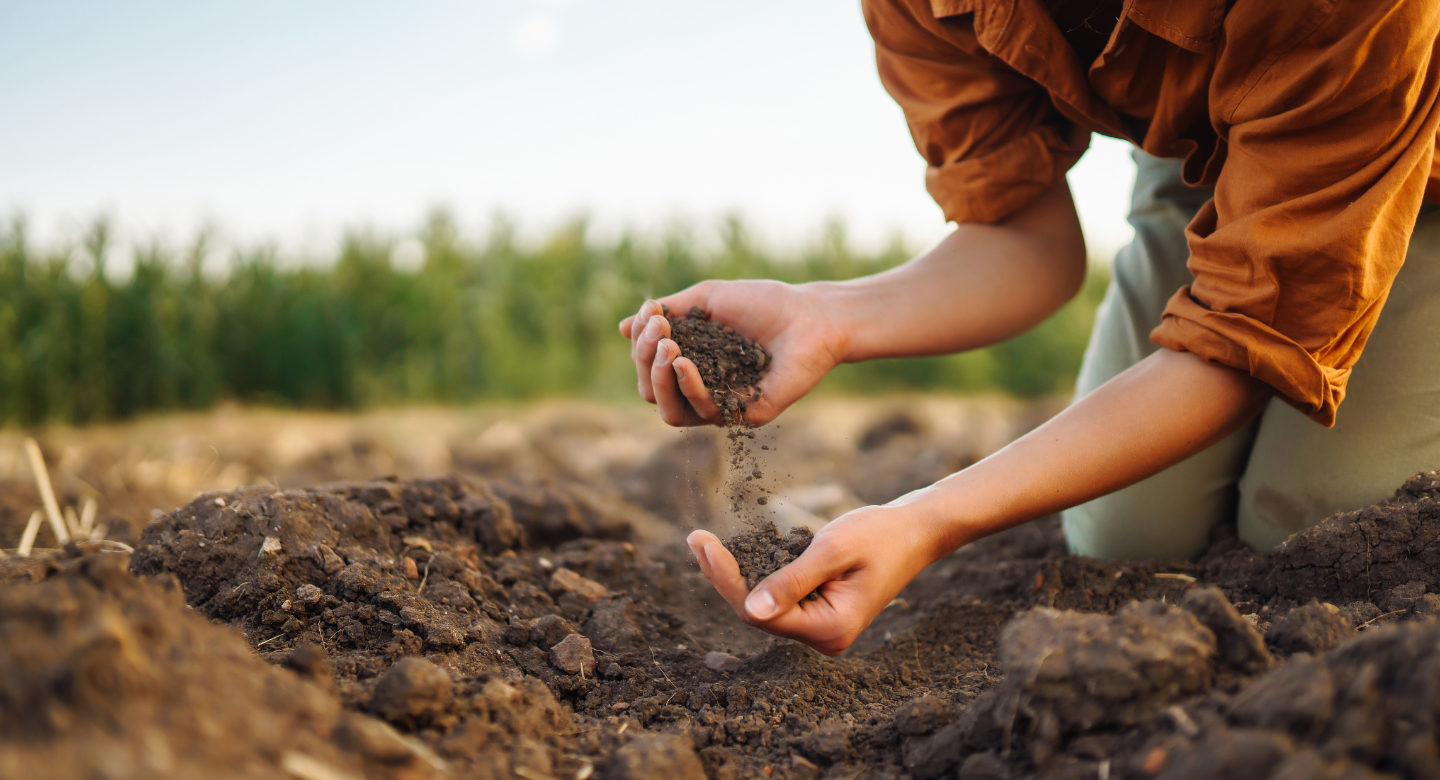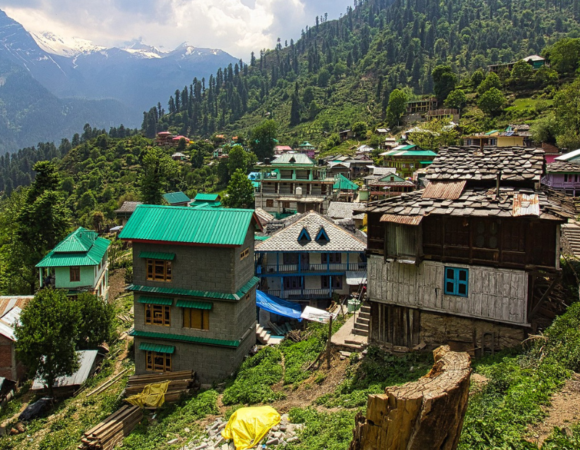Regenerative Living vs Sustainable Living -What’s the Difference and Why It Matters
In today’s world, we hear a lot about taking care of our planet. Regenerative living vs sustainable living are two approaches that aim to help our environment. Both are important, but they work in different ways. Let’s explore what makes them unique and why understanding the difference matters for our future.
Table of Contents
ToggleWhat Is Sustainable Living?

Sustainable living means trying not to harm the environment. It’s about using only what we need. This helps make sure future generations will have enough resources too.
When you live sustainably, you ask yourself: “How can I reduce the damage I cause to Earth?”
Common sustainable lifestyle practices include:
- Taking buses or riding bikes instead of driving cars
- Turning off lights when not in use
- Saving water by taking shorter showers
- Buying products from companies that care about the environment
- Using less plastic and recycling what you do use
- Shopping for secondhand items instead of always buying new
- Eating less meat and more plant-based foods
- Using energy-efficient appliances in your home
These habits help maintain what we have. They stop things from getting worse. A sustainable lifestyle is about leaving a smaller footprint on our planet.
Many cities now support sustainable living. They offer recycling programs, bike lanes, and farmers markets. These make it easier for people to make eco-friendly choices.
Sustainable living isn’t just good for the planet. It can save you money too. Using less electricity means lower bills. Growing some of your food can reduce grocery costs. Buying less stuff means less waste and more savings.
What Is Regenerative Living?

Regenerative living takes things further than sustainability. It’s about making the planet better, not just doing less harm. It focuses on healing damaged ecosystems and restoring nature’s balance.
With regenerative practices, you ask: “How can I actively improve and restore the Earth?”
Regenerative living includes:
- Growing food in ways that build healthy soil
- Planting trees and native plants that support local wildlife
- Harvesting rainwater to nourish gardens
- Creating compost from kitchen scraps to enrich the soil
- Building homes that produce more energy than they use
- Supporting regenerative farms that improve the land
- Joining community efforts to restore local natural areas
- Learning traditional skills that connect us to the land
- Creating wildlife habitats in your yard or community
Regenerative living sees humans as part of nature, not separate from it. It recognizes that we can be a positive force for the planet. Our actions can help rebuild what has been lost.
Even in cities, people practice regenerative living. They create rooftop gardens and community food forests. They turn vacant lots into vibrant green spaces. These efforts bring nature back into urban areas.
Regenerative practices often build community connections. They bring people together around shared values and goals. This creates stronger neighborhoods and support networks.
Regenerative Living vs Sustainable Living: Key Differences
Understanding the difference between sustainable and regenerative approaches helps us make better choices. Here’s how they compare:

Purpose and Goals
- Sustainable Living: Aims to maintain current conditions without making things worse. It’s about reducing harm.
- Regenerative Living: Works to improve conditions and restore ecosystems. It’s about creating positive change.
Actions and Focus
- Sustainable Living: Uses fewer resources and creates less waste. Focus is on efficiency.
- Regenerative Living: Actively builds soil health and biodiversity. Focus is on creating abundance.
Mindset
- Sustainable Living: “Do no harm” approach. Tries to be neutral.
- Regenerative Living: “Do good” approach. Tries to be beneficial.
Examples in Daily Life
- Sustainable Living: Using a reusable water bottle instead of plastic bottles.
- Regenerative Living: Creating a rain garden that filters water and supports pollinators.
Long-term Vision
- Sustainable Living: Maintain resources for future generations.
- Regenerative Living: Leave the world better than we found it.
Both approaches are valuable. Many people start with sustainable habits. Then they grow into more regenerative practices as they learn more.
Why Should We Shift Toward Regeneration?
Simply sustaining our current environment isn’t enough anymore. Many ecosystems are already damaged. They need help to recover and thrive again.

Benefits of shifting to regenerative living include:
- Healthier Soil: Regenerative practices build rich soil full of life. This grows more nutritious food.
- More Biodiversity: Native plants and wildlife return when we create the right conditions.
- Climate Help: Healthy ecosystems capture carbon from the air. This helps fight climate change.
- Water Improvement: Natural systems filter and clean water better than machines can.
- Stronger Communities: Working together on local projects builds connections between people.
- Better Health: Time in nature and fresh, local food improve our physical and mental health.
- Greater Resilience: Diverse, living systems can better withstand floods, droughts, and other challenges.
- Deeper Connection: Regenerative work helps us feel more connected to the earth and each other.
The world faces big environmental problems. Regenerative approaches offer hope and practical solutions. They show that humans can be a positive force in nature.
Scientists now recognize that many traditional indigenous practices were regenerative. Ancient cultures often worked with nature instead of against it. We can learn from their wisdom today.
How to Start a Regenerative Lifestyle
Moving from sustainable to regenerative living is a journey. You don’t need to change everything at once. Small steps lead to bigger changes over time.

Here’s how to begin:
- Start Composting: Turn kitchen scraps into rich soil for your plants. Composting keeps waste out of landfills.
- Plant Native Species: Choose local plants that support birds, bees, and butterflies. They need less water and care too.
- Grow Some Food: Even a few herbs on a windowsill connect you to your food source. Garden without chemical pesticides or fertilizers.
- Support Regenerative Farms: Buy food from farmers who build soil health and treat animals well. Visit local farmers markets.
- Learn About Your Region: Understand the natural patterns of your area. What plants, animals, and cycles belong there?
- Save Seeds: Collect seeds from your garden to plant next year. This preserves plant diversity.
- Conserve and Collect Water: Use rain barrels or create swales to capture rainwater for your garden.
- Join Community Projects: Help with tree planting, stream cleanups, or community gardens. Many hands make light work.
- Share Knowledge: Teach friends and family what you learn. Host skill-sharing workshops in your community.
- Start Where You Are: Use what you have. Do what you can. Even apartment dwellers can grow some food and compost.
Remember that regenerative living looks different for everyone. Urban and rural people will have different options. The key is making choices that help heal the land where you live.
Bringing It All Together: From Sustainable to Regenerative

The conversation about regenerative living vs sustainable living shows how our thinking is evolving. We’re moving from “less bad” to “more good” in our relationship with Earth.Sustainable living gives us a solid foundation. It helps us use fewer resources and create less waste. This is an important first step.Regenerative living builds on that foundation. It shows us how to actively heal damaged ecosystems. It helps us create abundance rather than just prevent scarcity.
Both approaches matter in today’s world. We need to reduce harm AND actively do good. The challenges we face require both strategies.Start with sustainable habits that reduce your impact. Then explore regenerative practices that restore your local environment. Every positive action counts.The shift from sustainable to regenerative thinking brings hope. It shows that humans can be a healing presence on Earth. We can leave the world better than we found it.
Let’s not just sustain our planet. Let’s regenerate it. Future generations deserve a world full of clean water, rich soil, and thriving ecosystems. Our daily choices can help create that world.
Explore More About Sustainability
Sustainable Home Hacks: 10 Tips for Effective Change
Eco-Friendly Products: 10 Reasons to Purchase Them
Frequently Asked Questions (FAQs) About Regenerative Living vs Sustainable Living
What is the main difference between regenerative living and sustainable living?
The main difference is in the goal and approach. Sustainable living focuses on reducing harm and maintaining current environmental conditions by using fewer resources. Regenerative living goes beyond this by actively improving and restoring ecosystems. Think of sustainable as “do no harm” and regenerative as “make things better than before.” While sustainable practices aim to minimize negative impacts, regenerative practices work to create positive outcomes that heal damaged systems and increase ecological health over time.
Is sustainable living no longer important if we focus on regenerative living?
Not at all! Sustainable living is still very important. It’s often the first step toward more regenerative practices. Many sustainable habits create the foundation for regenerative actions. Both approaches work together in a complementary way. Sustainable practices help us reduce our footprint and stop causing further damage, which creates space for regenerative work to begin. Most people start with sustainable habits like reducing waste or conserving energy, then gradually incorporate more regenerative practices as they learn and grow. The environmental movement needs both approaches working in tandem to address our planet’s challenges.
Can I practice regenerative living if I live in a city apartment?
Absolutely! Urban dwellers have many opportunities to practice regenerative living despite space limitations. You can grow food on balconies or windowsills, compost kitchen scraps in small indoor systems, and join community gardens or urban farming projects. Supporting local regenerative farms through your food purchases creates market demand for better practices. Many cities have volunteer opportunities for urban restoration projects where you can help create wildlife corridors and green spaces. Even small apartments can house native plants that support pollinators. Sharing regenerative skills and knowledge with neighbors can multiply your impact beyond your own home. Urban areas need regenerative approaches just as much as rural ones, and city residents often drive important innovations in this space.
How expensive is it to switch to regenerative living?
Regenerative living doesn’t have to be expensive and can actually save money over time. Many core practices like composting cost almost nothing but create valuable soil for growing food. Cultivating even a small portion of your own food reduces grocery bills while providing fresher, more nutritious options. Repairing, repurposing, and sharing items within your community reduces the need for constant consumption. Many regenerative skills can be learned for free through community groups, libraries, and online resources. While some regenerative systems like home solar may require upfront investment, they typically pay for themselves through long-term savings. The beauty of regenerative living is that you can start small with low-cost changes that fit your budget, then build from there as resources allow. The most valuable investments are often in knowledge and community connections rather than expensive equipment.
Does regenerative living mean I can’t use modern technology?
Not at all. Regenerative living embraces appropriate technology that works with natural systems rather than against them. Many regenerative homes incorporate advanced solar systems, smart water collection methods, and efficient design principles that utilize modern innovations. The key is choosing technology that supports healing ecosystems rather than damaging them. Digital tools like plant identification apps can help people reconnect with local ecology, while online networks facilitate knowledge sharing across communities. Modern innovations in materials science, renewable energy, and biological systems are often integral to regenerative design. The regenerative approach isn’t about rejecting technology—it’s about using technology wisely and purposefully to support living systems. This selective approach creates space for both traditional wisdom and cutting-edge innovation.
How can I tell if a product or company is truly regenerative versus just sustainable?
Identifying truly regenerative products and companies requires looking beyond marketing claims to actual practices and impacts. Regenerative businesses typically explain specific ways they improve ecosystems, not just reduce harm. They can show measurable positive impacts such as improved soil health, increased biodiversity, or enhanced water cycles in the places they operate. Look for terms like “net positive,” “climate positive,” or “better than carbon neutral” backed by transparent data. Regenerative companies think about whole systems rather than isolated aspects of their operation, and they maintain transparent supply chains that demonstrate positive impacts throughout. Certifications like Regenerative Organic Certified or Land to Market provide third-party verification of claims. A truly regenerative business considers its entire footprint—social, ecological, and economic—and works to ensure that all aspects create positive outcomes rather than just minimizing negative ones.
Can regenerative living practices really help with climate change?
Yes, regenerative practices offer powerful tools for addressing climate change through multiple pathways. They build healthy soils that pull carbon from the atmosphere and store it underground where it benefits plants rather than warming the planet. Diverse, regenerative ecosystems prove more resilient to extreme weather events like droughts and floods. By focusing on local production and natural materials, regenerative systems reduce dependence on fossil fuels and long-distance transportation. The restored forests, grasslands, and wetlands created through regenerative work capture carbon while supporting biodiversity. Scientific studies show that widespread adoption of regenerative agriculture alone could sequester significant amounts of atmospheric carbon while producing healthier food and more resilient rural economies. While no single approach can solve climate change, regenerative practices offer practical, accessible ways for individuals and communities to be part of the solution.
What’s the easiest regenerative practice to start with as a beginner?
Composting is the perfect entry point to regenerative living for most beginners. This simple practice turns kitchen scraps and yard waste into rich, living soil that can nourish plants and sequester carbon. Unlike many sustainable practices that merely reduce harm, composting actively creates something beneficial from what would otherwise be waste. It completes a natural cycle and provides firsthand experience of how natural systems transform and renew resources. Home composting systems can be as simple as a small bucket under the sink or as elaborate as a multi-bin outdoor system, making them accessible regardless of your living situation. The act of composting connects people directly to soil health—the foundation of regenerative thinking. From this starting point, many people naturally progress to growing some food, adding native plants, or exploring other regenerative practices as they witness the transformative power of working with natural cycles.
How does regenerative living relate to indigenous knowledge and practices?
Regenerative living draws significant inspiration from indigenous knowledge systems that have sustained human communities in relationship with local ecosystems for thousands of years. Many indigenous cultures worldwide developed sophisticated practices for enhancing soil fertility, managing forests, cultivating diverse food systems, and supporting wildlife—all while meeting human needs. These traditions often embodied a worldview that saw humans as participants in nature rather than controllers of it, which aligns closely with regenerative principles. Today’s regenerative movement acknowledges this debt to indigenous wisdom while recognizing the need to address historical injustices and support indigenous land rights. Many regenerative practitioners actively learn from indigenous teachers and support indigenous-led restoration efforts. This relationship must be based on respect, reciprocity, and recognition that indigenous communities continue to be vital knowledge keepers and land stewards today, not just historical sources of information.
Can regenerative living work at a large scale, or is it just for individual households?
Regenerative approaches absolutely can—and must—work at multiple scales to address our environmental challenges. While individual households play an important role, regenerative principles are being successfully applied to farms spanning thousands of acres, city-wide water management systems, regional economic networks, and corporate supply chains. Large-scale regenerative agriculture is proving more profitable for farmers while improving soil health across vast landscapes. Cities like Melbourne and Rotterdam are implementing regenerative urban design that manages water, increases biodiversity, and improves quality of life. Businesses like Patagonia and Dr. Bronner’s are pioneering regenerative supply networks that transform entire industries. What makes regenerative approaches powerful is their adaptability to different contexts and scales. The principles remain consistent—working with natural systems to improve ecological health—but the applications vary widely. Regenerative living isn’t just a lifestyle choice for eco-conscious individuals; it offers a framework for transforming how entire societies relate to the living world.







